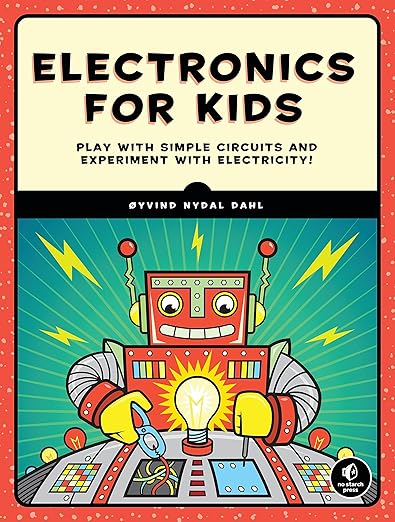In this Form 3-4 (grades 7-9) study guide, students will learn about simple circuits and electricity.
**TWO IMPORTANT NOTES**
- This book is pretty much “all-inclusive.” Therefore I did not feel that it was necessary to include the lesson setup, narration prompts, supplementary material, and discussion questions that I usually include. The real benefits of this guide are the links to purchase supplies and the lesson/book breakdown
- The supply list for this course is extensive. And somewhat costly. If you do not own any of the supplies, it is likely to cost just over $100 to purchase all that is required. However, I would remind you that homeschool science does require an investment. If your child is at all interested in electronics, consider doing what you can to provide the supplies needed for this course. The author’s passion for the subject is thoroughly contagious! Still, if the cost of supplies is beyond your budget, consider assigning a portion (100-120 pages) of The Story of Inventions by Michael J. McHugh and Frank P. Bachman (OOP) or Great Inventors and Their Inventions by Frank P. Bachman, (available through MainLesson,) for a term of technology and engineering.
Spine Text:
This abbreviated study guide accompanies the living book Electronics for Kids by Øyvind Nydal Dahl (No Starch Press, 2016). It is available on Amazon, but for a more extensive used-copy search, try used.addall.com.

- 328 pages, 12 chapters
- Reading Level: Grade 5 to 9
- Prerequisites: none
Author Bio:
Øyvind Nydal Dahl hails from Norway but has traveled and lived all over the world.
At the age of 14, an idea struck him when he noticed a light blinking on the family TV.
An idea in the form of a question: “How can you make a light blink like that?”
He then turned to his dad with that inquiry. It was helpful that Mr. Dahl was an engineer and had a knowledge of electronics. And that he had components in the basement he let young Øyvind experiment with. The ideas, experiments, questions, and understanding would continue to build.
Armed with curiosity, he has since received his master’s degree in electronics and computer science and now does a lot of electronics development, heavyweight industrial electronics projects, and teaching. Still, Øyvind has “never lost sight of the fact that, at its heart, practical electronics is straightforward, uncomplicated, and great fun to learn.” (source)
Schedule:
This study guide includes 33 lessons, each requiring approximately 30-40 minutes. You can either schedule it:
- Three times a week for 11 weeks, allowing for exams during the 12th week, or
- Once a week for an entire year, allowing time for exams at the end of each term and including other science subjects on the other days of the week.
SMH offers discounted prices for Co-Op and Schools. If you are purchasing for Co-Ops, please refer to this page. For School License, please refer to this page.
Reviews
This has been a favorite study for my son. He has enjoyed all of the experiments. The guide is incredibly helpful in knowing what supplies to purchase and comes with links that take you directly to the items needed for the experiments. The guide also helps with pacing and it would be difficult to just go through the book without the guided plan.
You must log in to submit a review.

